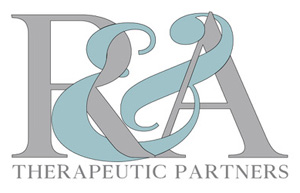Silver Lining: Pandemic Responsible for Largest Ever Drop in Teen Drug Use
Every year since 1975, the National Institute on Drug Abuse (NIDA) administers a survey assessing substance use among adolescence. This research, known as the Monitoring the Future survey, asks teenagers in 8th, 10th, and 12th grades to describe their drug use and alcohol consumption over various lengths of time. In 2021, researchers identified an astounding trend. A record low number of adolescents reported substance use, possibly due to the impact of the global pandemic. These findings have become a silver lining in the face of COVID-19.
Teen Drug Use Survey Findings
To understand the significance of the survey’s results, it is important to compare this year’s numbers with previous findings. Dr. Richard A. Miech, lead author of the paper, stated that “in addition to looking at these significant one-year declines in substance use among young people, the real benefit of the Monitoring the Future survey is our unique ability to track changes over time.”
In 2021, the numbers for use of alcohol, marijuana, vapes, and other illicit substances painted a promising picture of the future.
Alcohol – 28.5% of 10th graders reported drinking within the past year in 2021, compared to 40.7% in 2020.
Marijuana – The rate of marijuana use decreased among all age groups. The most significant shift also took place among 10th graders: 17.3% admitted use in 2021, compared to 28.0% in 2020.
Vaping – The new trend in nicotine consumption, vaping rates lowered among all age groups. 26.6% of high school seniors responded that they had vaped during 2021, while 34.5% of them said as much in 2020.
Other Illicit Drugs (Excluding Marijuana) – This statistic also dropped significantly among all ages. (8th graders: 4.6% in 2021, 7.7% in 2020. 10th graders: 5.1% in 2021, 8.6% in 2020, 12th graders: 7.2% in 2021, 11.4% in 2020.) This trend was true among individual substances like cocaine, amphetamines, hallucinogens, opioids, and tranquilizers.
2021 Monitoring the Future Survey Results
In past years, the Monitoring the Future survey has identified downward trends in adolescent drug use. However, the 2021 results represent an unparalleled reduction in youth drug consumption. According to the report published by the National Institutes of Health, “These findings represent the largest one-year decrease in overall illicit drug use reported since the survey began in 1975.”
The survey measures consumption of a variety of substances, including:
- Marijuana
- Alcohol
- Vaped nicotine
- Tobacco
- Illicit substances
Researchers and high-ranking officials have extolled this precipitous drop in unhealthy habits. “We have never seen such dramatic decreases in drug use among teens in just a one-year period,” said Dr. Nora Volkow, director of NIDA. “These data are unprecedented and highlight one unexpected potential consequence of the COVID-19 pandemic, which caused seismic shifts in the day-to-day lives of adolescents.”
Youth Mental Health During the Pandemic
As Dr. Volkow asserts, COVID-19 has changed the lives of teens in myriad ways. As part of the Monitoring the Future survey efforts, the mental health of participants was assessed in 2021. In spite of the promising statistics listed above, problems were identified.
It was discovered that students in all three age groups reported increases in worry, loneliness, difficulty sleeping, depression, anxiety, and other mental health symptoms since the start of the pandemic.
For this reason, it has become especially important to provide young people with access to evidence-based mental health care. With the help of a trained therapist, for example, teenagers may learn to manage their anxiety and depression symptoms without the use of substances. Coping mechanisms such as grounding techniques, mindfulness exercises, and square breathing may alleviate many of the frustrations and problems faced by teens stuck at home.
Additionally, qualified mental health care provides an outlet for adolescents brimming with newfound emotions, challenges, and struggles. When a teen feels like they can open up to a therapist, they will learn to manage their feelings, communicate effectively with loved ones, and make a constructive plan for the future.
At R&A Therapeutic Partners, we provide the care that adolescents need. Through proven methods, innovative therapies, and compassionate interactions, our clinicians help young people to prepare for successful, independent futures.
To learn more about our services, contact us online.
At R&A Therapeutic Partners Raymond Estefania and Ana Moreno specialize in substance use and mental health disorder evaluations, treatment, intervention and therapeutic/educational consulting for clients throughout the greater South Florida area, as well as nationally and internationally. For more resources and information please visit Therapeutic-Partners.com or on Facebook.


